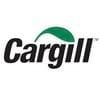Cross-sectional study one year after an acute PRRS outbreak
Published: November 6, 2025
Source : G. Dhom 1,2, L. Beffort 1, S. Zöls 1, R. Fux 3, S. Fröhlich 1, M. Eddicks 1, K. Fiebig 4, A. Ladinig 5, M. Ritzmann 1, A. Palzer 1,2* / 1 Clinic for Swine at the Centre for Clinical Veterinary Medicine, Ludwig-Maximilians University, Oberschleissheim; 2 Veterinary Pig Practice , Scheidegg; 3 Institute for Infectious Diseases and Zoonosis, Ludwig-Maximilians University, Munich; 4 MSD Animal Health, Unterschleißheim, Germany; 5 University Clinic for Swine, University of Veterinary Medicine Vienna, Vienna, Aus
Summary
Keywords: PRRSV infection, PCR, PRRSV-persistence
Introduction:
PRRSV outbreaks have recently been described in several boar studs in Germany, though only a few farrowing farms have observed clinical signs. In the present study, 14 farrowing farms with different vaccination schemes were included that reported severe clinical infection after insemination with PRRSV-contaminated semen. For these 14 farms, the PRRSV infection status was recorded one year after the initial outbreak, taking into account their vaccination schedules.
Materials and Methods:
Fourteen farms that reported a field infection with PRRSV one year prior to our study were included. All farms carried out a PRRSV vaccination with the vaccine Porcilis® PRRS i.m.(MSD Animal Health, Intervet Germany). To evaluate the PRRSV status one year after the outbreak, on each farm blood samples were taken of 30 suckling piglets, 10 pigs at the middle of the nursery period and 10 pigs at the end of the nursery period. Samples that tested PRRSV-positive by PCR were further sequenced to distinguish between vaccination and field strains.
Results:
One year after the initial outbreak, no farm showed any clinical signs of an infection with PRRSV. Only 8% (57 from 710) of the collected samples from ten farms were tested positive for PRRSV genotype I. Of these samples, 5.6% belonged to suckling piglets, 6.9% to pigs at the middle of the nursery period and 17.7% to pigs at the end of the nursery period. In farms with sow vaccination only no infection with PRRSV genotype I could be determined in the suckling piglets. In contrast, significantly (p = 0.012) more positive samples of suckling piglets were found in sow and piglet vaccinating farms (9.0%). Considering phylogenetic analysis, the PRRSV field strain that was responsible for the outbreak at the end of 2013 was re-isolated in five farms (two sow vaccinating farms and three sow and piglet vaccinating farms). In all of these farms, the field strain was detected in the nursery pigs (middle of the nursery period: 1/5; end of the nursery period: 5/5). In addition, the field strain was re-isolated in suckling piglets in two of the farms that vaccinated the sows and the piglets. In contrast, the PRRSV vaccine strain was only isolated in sow and piglet vaccinating farms (suckling piglets: 3/6, middle of the nursery period: 4/6, end of the nursery period: 1/6).
Conclusion:
In five farms, the PRRSV field strain could be identified one year after the initial outbreak. Most positive samples were detected in the pigs at the end of the nursery period. In farms which were still infected with the initial field strain, the clinical situation could be controlled by vaccination of the piglets.
Disclosure of Interest: None Declared.
Published in the proceedings of the International Pig Veterinary Society Congress – IPVS2016. For information on the event, past and future editions, check out https://www.theipvs.com/future-congresses/.
Content from the event:
Related topics:
Mentioned in this news release:
Recommend
Comment
Share

Would you like to discuss another topic? Create a new post to engage with experts in the community.










